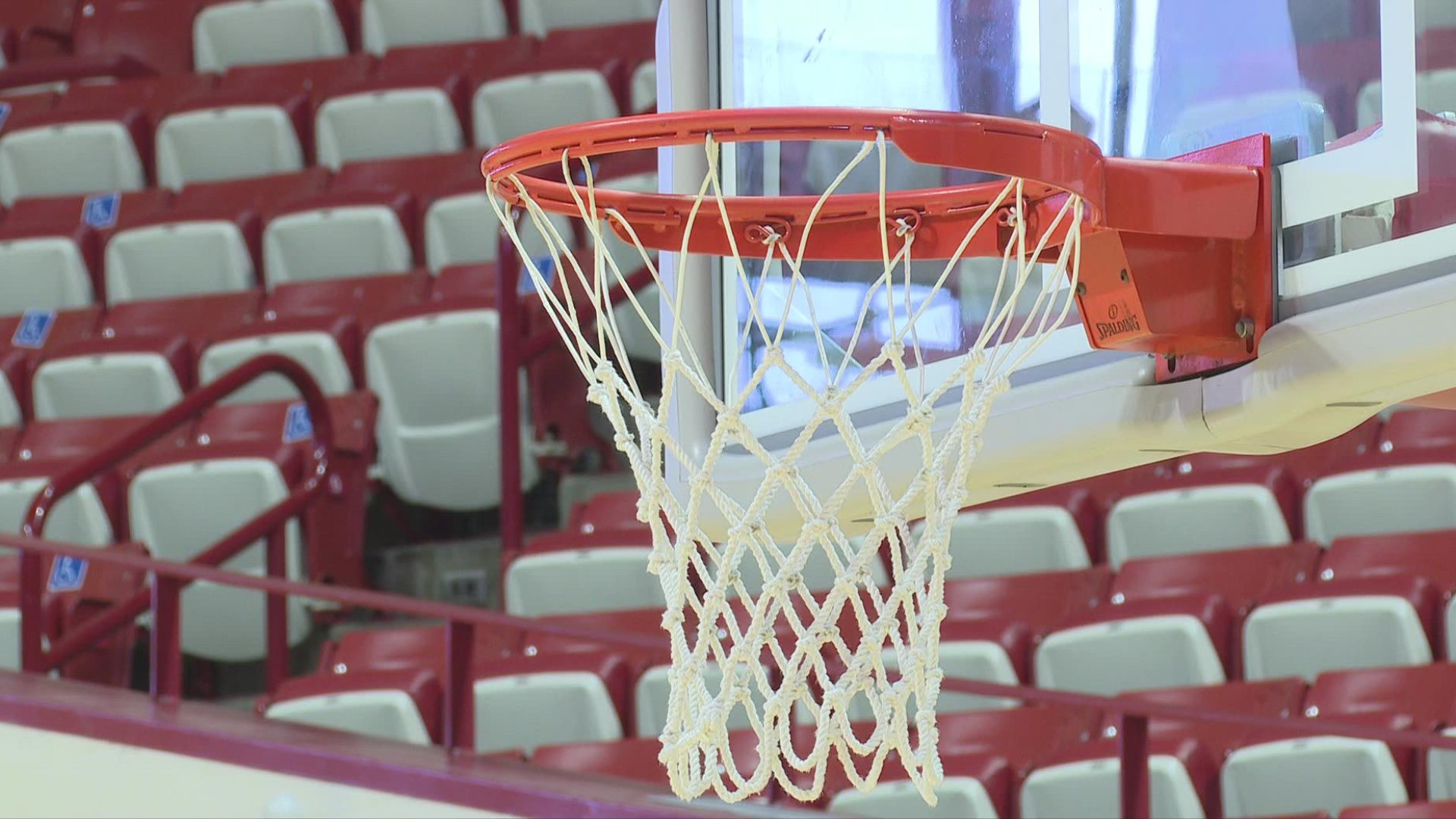It's been 50 years since Title IX protections were signed into law on June 23, 1972, by President Richard Nixon.
"Title IX is a law that prohibits discrimination on the basis of sex in schools. And it covers teachers, students, staff, visitors, anybody basically in a school that is federally funded, which is most schools," said Dr. Jennifer Drobac, professor at IU McKinney School of Law.
Over the decades, the world of sports and education have seen dramatic shifts as districts and universities moved to a more equitable model, offering opportunities for young people, regardless of gender.
But many legal experts and those who took on the fight for equal opportunities for women in the 1970s say the push for gender equity in schools is far from over.
"It's all about fairness, leveling the playing field," said Jayma Meyer, a sports law and public policy professor at the O'Neill School of Public and Environmental Affairs at Indiana University.
Meyer has spent much of her life fighting for girls to be treated equally. In the classroom, she teaches her students about the impact of Title IX.
As a girl, she lived it.


Meyer grew up in Bloomington. She said she remembers walking down to the pool as a child to watch the IU men's swimming team train, dreaming of becoming a swimmer herself. After her family moved to Valparaiso, Meyer said she found success as a swimmer, setting state records with dreams of reaching the Olympics.
But at 14 years old, she suddenly found she had aged of out of available swim programs.
"There was no girls team," Meyer said. "So I asked, in fact, I begged the boys' swimming coach to let me practice with them. I didn't even think about competing with them. And he said no, because I would humiliate the boys, I would be able to beat them. So I had to come up with another plan."
Meyer said she took on training on her own instead. She convinced the local YMCA to allow her into train in the pool as the janitor opened the building at 5:30 a.m., with her mother nearby serving as a lifeguard.
She pushed herself forward, training in Florida at times and trying to keep to a vigorous schedule in the pool. She was ranked in the world for the butterfly, but said she fell just short of making the 1972 Olympic team.
"So instead of traveling to Munich, I came to Bloomington and watched on TV all the guys who I had, at that point, been practicing with, Gary Hall and Mark Spitz of the world, at the Olympics. And it was pretty demoralizing, because the same thing happened to me at IU as was in high school, there was no girls swim team," Meyer said. "Again, they had the best boys team in the country but absolutely nothing for women."
In 1972, Title IX had just passed but Meyer said few opportunities for women in sports existed at that point - and many fought against it.
"For the two or three years after Title IX was signed by President Nixon on June 23, 1972, there were incredible attempts to try to prevent the Title IX, which applied to all activities and programs, in programs in education, but to prohibit it from applying to sports," Meyer said.
The NCAA even filed a lawsuit in 1976, challenging Title IX's legality.
Mattie White, deputy director of athletics at IU and senior women administrator, said creating teams and programs for women to match what the men had took years.
"There were growing pains across the country, and when you think about those beginning budgets that had to be established and the resources needed, it took us 10 to 15 years to get our sports programs established," White said.
Prior to 1972, IU had a physical education for women department with some teams for intramurals and extramurals, which allowed the university to roll some of those sports programs into athletics quickly, like women's basketball.


"After Title IX in those first few years, they had great success going to the national tournament, making it to a Final Four," White said. "But other sports had to establish that foundation."
White said it was tough.
The budgets for women's teams were meager compared to men's at that time. But, she said, many women on campus were ready to jump in.
"There were women who were participating and wanted to play and be a part of sports, you know, they'd had these extramural opportunities, so there was interest. But there was still work to increase the demand and also educate women that they now have these opportunities to participate in athletics at Indiana University," White said.
In the decades since, White said IU has made significant strides to ensure men and women have access to the same opportunities, similar facilities and comparable coaches and equipment. And while budgets are much more closely aligned these days than they were in the 70s, White said there are still inequities in athletics at IU that they're constantly working to close the gap on.
"The work is still being done to this day," White said.
For Meyer, her own push for gender equity goes beyond the classes she teaches at IU and into her work, first as an antitrust lawyer and now, focusing on gender equity and sports law to ensure Title IX is being followed around the country.
"I really committed to making a difference in this area, so that no girls or women suffered in the inequities in sports that I did," Meyer said.


Now, 50 years after Title IX was first signed into law, the fight for equity in the classroom and on the field isn't over. Meyer said she's not giving up that goal, ensuring young girls have every opportunity to succeed.
"There's still a lot to be done. And education, education, education, it's so important because if you don't know about it, you're not going to try and do something differently, try to change it," Meyer said.
“It made a huge difference in my life because I could access sports, I didn't face discrimination in math class, in sciences," Drobac said. "And people really started noticing how sometimes teachers called on boys more often than they called on girls, and so the classrooms really started changing, schools started changing, they started offering more opportunities to girls.”
A half-century after the law was first signed, many legal advocates stress there's still work to be done to ensure Title IX is protecting everyone in schools.
Title IX faced a number of legal hurdles in the 1970s to include women in sports. And earlier this year, the Supreme Court ruled that under the Affordable Care Act, emotional distress damages can't be awarded for discrimination. That's expected to cut off money for people who win Title IX lawsuits that schools previously had to pay.
Drobac said that's deeply concerning because without it, victims might not be able to afford to come forward in the future if they don't have the money to pay lawyers to bring a Title IX case forward.
"It's really hard to sue. You have to get a lawyer, the lawyer has to get paid. And if there are no available damages for emotional suffering and no medical bills because no one was raped, heaven forbid, or assaulted. It could be that there are really no money damages which would mean they've gutted Title IX in its 50th anniversary because who's going to sue for nothing?" Drobac said.
And now, there's the question of trans athletes in women's sports. Title IX directly says people are protected from discrimination based on sex. But as states like Indiana pass laws effectively banning trans athletes from participating, many legal advocates wonder if the Supreme Court will side with Title IX as written as they've done previously, or with states on the banning trans athletes.
"In my opinion, it's illegal. It's a violation of the constitution, 14th Amendment equal protection clause. It's a violation of Title IX as interpreted through Bostock. So yes, in my opinion, it's illegal," Drobac said of legislation banning trans athletes in sports.
"You'd have to really contort yourself to say that this is not discrimination," Drobac added.
What other people are reading:

